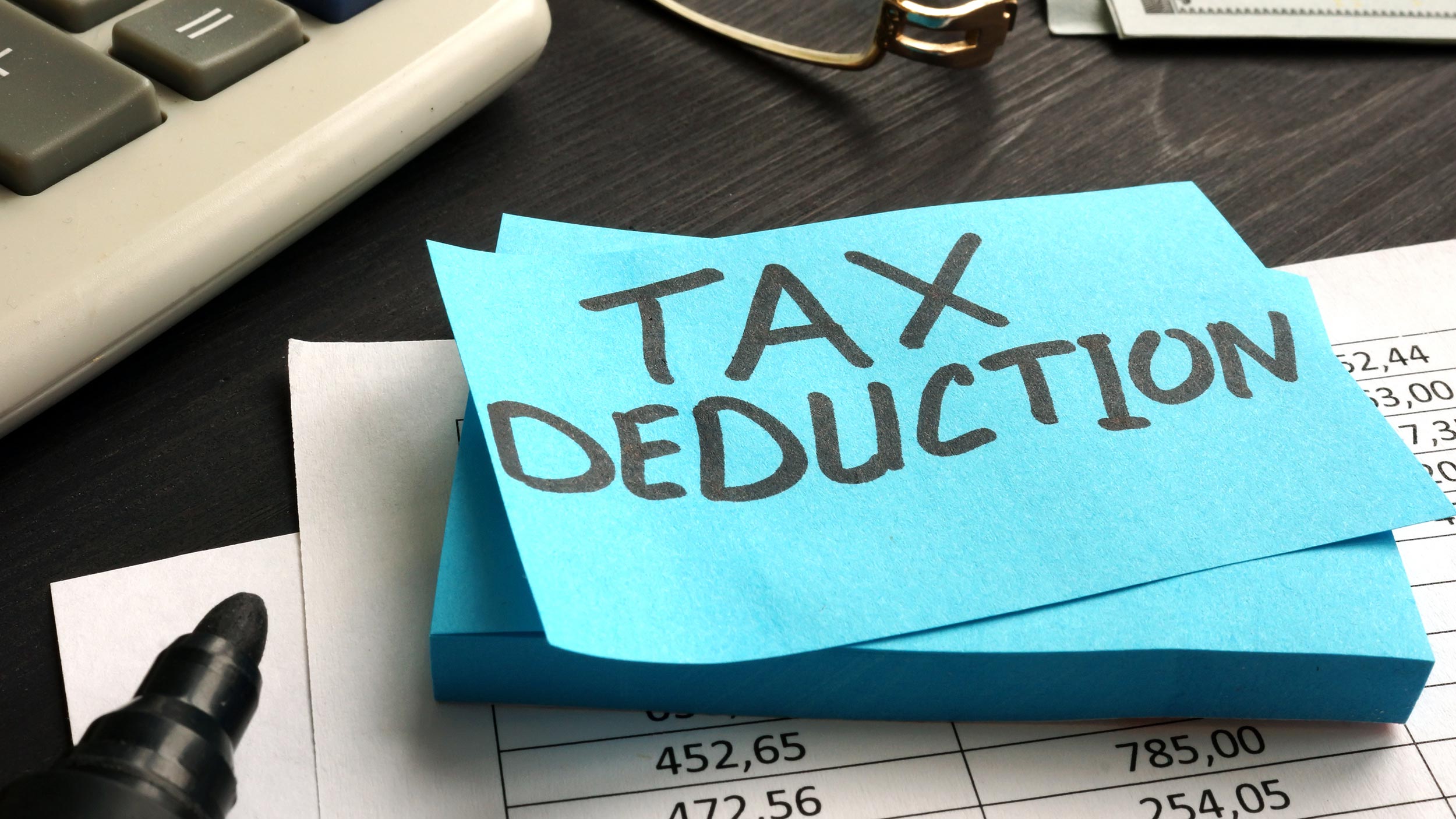Tax laws change often and increasing complexity makes it hard to stay on top of the latest tax saving strategies for high income earners. For instance, the 2017 Tax Cuts and Jobs Act was the largest overhaul of the tax code in a generation. New tax legislation made small reductions to income tax rates for many individual tax brackets. Then came the SECURE Act and Taxpayer Certainty and Disaster Tax Relief Act of 2019.
Now, in 2022, a higher standard deduction of $12,950 for individuals and $25,900 for joint filers make it harder for high-income earners to find enough deductions to itemize. Both pieces of tax legislation drastically changed tax laws. We saw a period of record-high government spending during COVID, and this trend could continue. Considering proposals for raising taxes on high-net-worth individuals and the expiration of the Tax Cuts and Jobs Act at the end of 2025, you could potentially be paying more in taxes in the future than you expected. So, how can you take advantage of current tax saving strategies for high income earners, and what you can do to plan for future taxes?
Maximize Your Deductions
As a business owner, one of the most important aspects of financial planning includes calculating your taxable deductions. This is an extremely valuable tool for the self-employed. Unlike the limited personal tax deductions, you have the advantage of deducting your business expenses to pay less taxes!
Deductions and tax saving strategies for high income earners come in all shapes and sizes. Taking the time to calculate your business expenses could bring major tax savings at the end of the year. Be sure to work closely with your accountant to properly calculate expenses and deductions to avoid any unwanted IRS tax audits.
Let’s go through a list of possible deductions to take advantage of this tax season:
- Advertising and networking costs
- Networking events, commissioned work, Google Ads, etc. (media production, fixed costs, sales commissions, and other marketing expenses).
- Networking events, commissioned work, Google Ads, etc. (media production, fixed costs, sales commissions, and other marketing expenses).
- Required ongoing education
- Books, courses, training, ongoing education seminars, etc.
- Ongoing education for a real estate license qualifies.
- Don’t miss the biggies like a laptop needed for a course, printers, and smaller incidental materials and even copying services. It can even include hiring an assistant to type a research paper.
- Health insurance and child care
- Deductible from personal income taxes.
- Includes dental and age-based premiums for long-term care coverage.
- Possibly health insurance for your spouse and dependents.
- Childcare expenses on your personal income taxes to allow you to conduct business. Includes daycare centers, babysitters, summer camps, or other care providers. (See IRS Publication 503 (2021), Child and Dependent Care Expenses).
- Business membership or association dues
- These go beyond your basic business licenses and professional licenses.
- Real estate boards, trade associations, etc.
- Dues and fees to Rotary Club, and local Chambers of Commerce.
- Don’t tempt a tax audit with personal membership fees to country clubs, gyms, etc.
- Professional or legal services.
- The original business operating paperwork and advice for an S-Corp or C-Corp. Along with annual updates and services.
- CPAs fit here.
- Business consultants belong to this group.
- Include all incidental expenses such as postage and overnight document delivery.
- Internet Service or Website Expenses
- There’s plenty more beyond your monthly internet bill and website hosting expenses.
- Include merchant accounts, stock photography, and website support such as someone to design your site, a blog writer, and ongoing maintenance.
- Other website services.
- Home office or office supplies
- Biggies include mortgage/rent, co-working spaces, and part of your home expenses against business income (home office space, heat, cleaning services, etc.).
- Standard items such as notebooks, stamps, postage fees, ink cartridges, etc.
- A laptop computer to take your business to clients.
- Think about your unique business expenses. An Uber driver is certainly going to have customer-related expenses like extra car cleanings and can probably include a cell phone dedicated to the business.
- Talk to your accountant and check your local or state laws for other business deductions
Inside this single strategy are dozens of possible deductions and credits. Let’s continue with many more tax saving strategies for high income earners.
Opening a Solo 401K is Among the Important Tax Saving Strategies for High Income Earners
The Solo 401k allows the maximum contributions to a retirement account and gives more investment options for investors to grow their retirement! Maximum contributions = maximum tax deductions. A Solo 401k can be the single most valuable strategy among all the tax saving strategies for high income earners.
A Solo 401k for your business delivers major opportunities for huge tax deductions every year. For 2021, the IRS Solo 401k contribution limit is $58,000 before eligibility for catch-up contributions. There are two more ways to make this high contribution limit even higher. The “catch-up” contribution increases to $64,500 if you are 50 years old or older. A Solo 401k also allows your spouse to participate to boost your total contribution limit to as high as $129,000 per year!
Contributions are based on your net earned income from your business that sponsors your Solo 401k. The ability to contribute either traditional or Roth funds to the Solo 401k gives you the freedom to change your investment goals frequently. There is no annual minimum funding requirement to follow either! You can contribute zero or up to the maximum each year. This is the most customizable of the tax saving strategies for high income earners.
There are only two qualifications to participate in a Solo 401k plan. The first is having a self-employment business (Sole Proprietorship, LLC, S-Corp, or C-Corp). Finding your own path and taking charge of your future can be exciting and a lot easier than you think. Even if your business does not yet have an EIN, your Social Security number is acceptable to open a Solo 401k plan.
The second Solo 401k qualification is your business has no full-time W-2 employees. “Full time” for the Solo 401k means 500 hours or more for 3 consecutive years. Plan eligibility holds when you have part-time employees (500 hours or less per year) or hire independent contractors. A key aspect is that you are both an employee and the employer of your business. This places you in full control of how much is contributed to your Solo 401k plan each year and to take advantage of these valuable tax saving strategies for high income earners. As soon as you are ready to set up your Solo 401k, you apply online with your self-employment and personal information.
Another important aspect adds to the value of your Solo 401k as a tax-saving strategy. This is the IRS inflation ladder that regularly increases contributions and deductions. This is especially critical in 2022 because of the high inflation in 2021. The new maximum contribution for 2022 is $61,000. Plus, a $6,500 catch-up contribution for those 50 or older. The possible total in 2022 is $67,500 for business owners over the age of 50. And… this maximum can double to $135,000 when your spouse is a plan participant.
Of all the tax saving strategies for high income earners, the Solo 401k not only gives you the most control over your retirement funds but very well may be the biggest contributor to your tax savings!
Max Out Retirement Accounts and Employee Benefits
You can have your cake and eat it too! Yes, you can contribute to both your Solo 401k and another employer-sponsored plan that also makes matching contributions. This can be profound when it comes to building your wealth. This works when you make a salary at a corporate day job and are running a profitable side business.
As long as the businesses you work for have no legal overlap or affiliated relationship, then yes you can contribute to multiple retirement plans.
Other plans include corporate 401k plans, SEP IRAs, profit-sharing plans, 457b plans, and 403b plans. This means you can significantly increase the contributions to your retirement by taking “other people’s money” and receiving employee benefits from a “day job.” What you need to understand is that contributions come from two separate sources. One is the employee salary-deferral contribution and the second is the employer profit-sharing contribution. You gain the added benefit from the profit-sharing contribution from your business.
When your other employer offers a 401k plan (or another plan), you can participate by making employee salary deferrals. This is generally the amount that your other employer will match. You want to take those matching funds because it is almost free money (other people’s money). What you need to know is that you can only deduct the total employee salary deferral once from your taxes. This means that if you haven’t reached the IRS maximum with your corporate employer, you can still contribute to the maximum of your Solo 401k employee salary deferral. The IRS logic here is that you know your combined salary deferrals and therefore must limit your deduction to the IRS maximum.
What you want to do is maximize your profit-sharing contributions. Let’s imagine you’re maxing out the employee contributions at your corporate job. You can still max out the employer profit-sharing contribution to your Solo 401k. Your profit-sharing contribution amount varies slightly depending on your business structure. If your small business is a Sole Proprietorship or Single-Member LLC, you can contribute 20% of your profits. If you have a C-Corp or an LLC taxed as an S-Corp, you can contribute up to 25% in profits. You can also make after-tax contributions, which can be converted into Roth funds.
For financially savvy people, this is the best of both worlds. A corporation (or any employer) can provide valuable benefits such as medical insurance that your small business doesn’t need to pay for. The other employer can also be contributing matching funds to your retirement. At the same time, you further reduce your taxes by contributing to a Solo 401k to take advantage of multiple tax saving strategies for high income earners.
The bottom line is that you can open a Solo 401k even if you are an employee for another business. You can take advantage of employee benefits, add other people’s money to your retirement, and take advantage of more tax savings with your Solo 401k.
Leverage Vehicles for Future Tax-Free Income.
Looking to grow your money tax-free? You should consider investing with Roth funds. Roth is another of the powerful tax saving strategies for high income earners because the earnings grow tax-free. But it has a significant difference from a traditional Solo 401k account.
The big difference occurs when you begin withdrawing funds from your Roth Solo 401k. You will pay taxes when you make the Roth contributions, but you will NOT pay taxes on earnings, interest, dividends, and capital gain. All are tax-free when taken out at retirement. On the other hand, because no tax was paid on Traditional Solo 401k contributions, taxes are owed at the time of withdrawal. The owed Traditional 401k taxes apply to the original contribution, earnings, interest, dividends, and capital gain.
Fortunately, tax saving strategies for high income earners can be flexible. You don’t have to choose one or the other when you open your Solo 401k account with Nabers Group. Every Solo 401k by Nabers Group automatically includes a Roth 401k sub-account at no extra charge. This gives you the freedom to decide if and how you want to fund, use, and invest your Roth money.
The Solo 401k Roth limit is $19,500. But Nabers Group can help you do much better than that by offering the Mega Backdoor Roth plan. The Roth 401k sub-account and the Mega Backdoor Roth are both tax saving strategies for high income earners who want a future tax-free income. If there’s potential for a high return by investing a smaller amount of money upfront, Roth can be the way to go.
5 Reduce Taxable Income with a Side Business
The Solo 401k is the most powerful and versatile retirement account for small business owners, freelancers, and even money-making hobbies. As long as you meet the two criteria, your small business qualifies for a Solo 401k. Many people with a full-time W-2 job, don’t think of their side gig as a business. What’s interesting is that according to the IRS, it is a business.
But a small business doesn’t mean a small salary. Small business owners need tax saving strategies for high income earners. Not every small business owner is a multimillionaire, but most do make very good money. As for how much they’re making, 31% of American small business owners had household incomes of $100,000 or more and 35% had household incomes between $50,000 and $99,999. For example, software developers average $106,710, attorneys average $141,890, and independent artists/writers/performers average $98,960.
Being a sole proprietor is the simplest and easiest way to start in business. You typically do business under your name or a DBA (Doing Business As) name. You can also set up a Solo 401k using a Single-Member LLC, Multi-Member LLC, and C or S Corporation. Not owning a small business today is a big mistake because it’s so simple to do. It doesn’t have to involve substantial capital investment, risk, or time commitment. Downloading and using an “app” on your smartphone can make you a business owner in minutes.
The biggest lifetime expenses for Americans are taxes, and most people overpay their taxes. Becoming a business owner can immediately lower your taxes by making some of your expenses tax-deductible. And when tax saving strategies for high income earners come into play, you can put more money into your retirement plan, and increase your tax deduction by opening a Solo 401k!
Bonus Tip: Tax Strategies for High Income W-2 Earners
If all your income comes on a W-2 form, your taxes will be 10% to 37% of your income. The maximum tax-deductible contribution for a traditional IRA in 2022 is $6,000 if you’re younger than age 50. On the other hand, tax-deductible contribution limits to a Solo 401k are very high. For 2021, the max is $58,000 and $64,500 if you are 50 years old or older.
Maxing out your Solo 401k allows you to save money on taxes and contribute more towards your retirement. In fact, most financial advisors encourage you to max out your 401k contributions. In a few short years, you can be among the many small business owners looking for tax saving strategies for high income earners.
The Bottom Line
A Solo 401k plan is easy to set up, flexible, and can be funded with tax-deductible contributions up to $58K, about 10X higher than an IRA. 2022 is the Year to Take Your Maximum Tax Savings. Setting up a Solo 401k is a powerful tax planning tool. Solo 401ks are fully compliant with all IRS rules. With Nabers Group, you can begin investing in what you want. You are also ready to take full advantage of the 2022 tax benefits that come with your Solo 401k!
Take your retirement future into your control. You worked hard for your money, and you deserve to control where it’s invested and grow as much as you want. Save big on taxes and invest with freedom using a Solo 401k.




